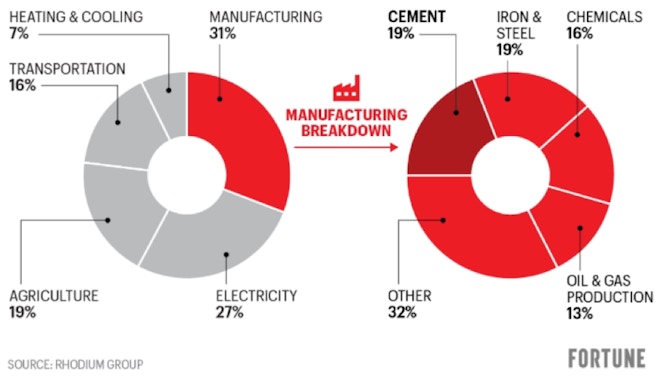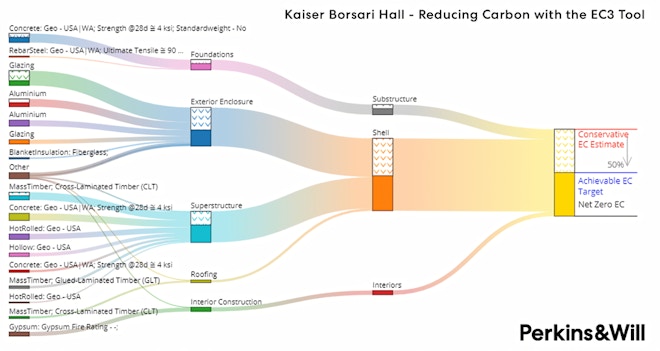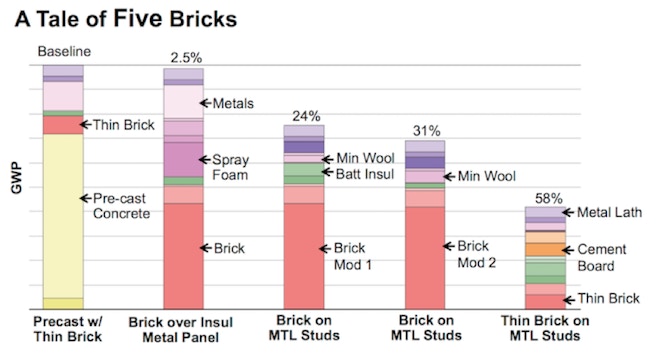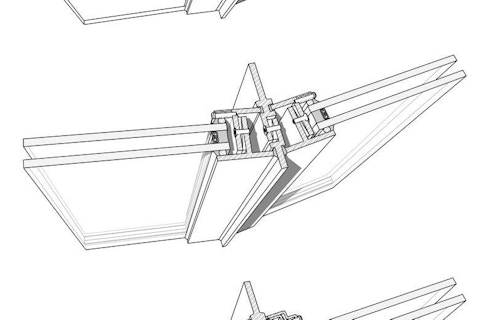Addressing climate change through façade design - Vaclav Hasik
Functional aspects of facades and the role of embodied carbon
Since the beginning of human civilizations, buildings and their facades have had three main functions: shelter from the elements, providing daylight and views, and offering striking aesthetics. Energy efficiency performance is also a key consideration, and the oil crisis of the 1970s helped us accelerate buildings’ operational energy innovation. That momentum has carried over into the current climate crisis as the building industry addresses a relatively new, but equally as important, element in the fight against climate change: embodied carbon - the carbon emissions from product manufacturing, transport, installation, replacement, and end-of-life disposal.
Today, we have the ability to design net-zero carbon buildings from an operational perspective, but the way we manufacture most products hasn’t gotten any less carbon-intensive. In fact, Bill Gates recently pointed out the significant carbon footprint of materials such as cement, metals, chemicals, and plastics. While many of these materials are used primarily in the structure of a building, the use of precast concrete, concrete masonry units, aluminum and metal cladding, foam insulations, and other cladding materials can also contribute to a building’s embodied carbon due to energy-intensive manufacturing processes, direct emissions from chemical processes, or direct releases of substances such as blowing agents.

Figure 1: Carbon footprint of product manufacturing. (Image published in Fortune magazine.)
We have an opportunity to store carbon in buildings by using bio-based materials like wood, straw, hemp, or other carbon-sequestering materials within wall and roof elements. These products remove CO2 from the atmosphere during the growth of the feedstock tree or crop and essentially store it in the building throughout the life of the products.
In addition to being valued from a safety and economic perspective, durability is another performance criterion that has a positive impact on embodied carbon. The longer envelope materials last, the less often they need to be replaced or repaired, reducing excess processing or manufacturing. For example, one study found that while aluminum window frames are more energy-intensive to manufacture, their maintenance, durability, and recyclability have the potential to make them the lowest carbon footprint option when compared to wood and PVC frames on a full life-cycle basis.
Embodied carbon impact of facade systems
Some materials foster lower carbon footprints by the nature of their manufacturing process or because manufacturers have invested in improvements. One way to find out a product’s embodied carbon footprint is by looking at third-party verified Environmental Product Declarations (EPDs) from manufacturers. More manufacturers are embracing the practice of providing EPDs and there are now better tools to help you find them. For example, the EC3 tool allows users to search and compare digitized EPDs from around the world, for free. EC3 also aims to incentivize improvements across whole supply chains by working with industries in identifying uncertainties in the sourcing of feedstock materials as well as their manufacturing processes, advocating for collective transparency in carbon accounting.

Figure 2: Comparing products’ upfront embodied carbon using EC3.
Owners, architects, and contractors can also track the overall embodied carbon footprint of projects using the EC3 buildings planner, which enables users to link material quantities to the EPDs in the database. The project results can be analyzed through Sankey diagrams (see Figure 3) or bar charts and can also be exported in a spreadsheet format for reporting to certification organizations. EC3 Pilot Partner Perkins&Will recently used this feature to understand the carbon footprint of Western Washington University’s Kaiser Borsari Hall as well as a Graduate Student Housing Project. Both projects have a mass timber structure which results in lower total embodied carbon, but it also highlights the significant impact of the glass and aluminum in the curtain wall. The Perkins&Will team used this information to further refine the envelope design and material selection including alternative window-to-wall ratios, fiberglass window systems, and the use of more natural cladding materials like wood.

Figure 3: Product Stage embodied carbon Sankey diagram from EC3. (Image courtesy of Perkins&Will)
A material’s embodied carbon emissions can also be determined using Whole Building Life Cycle Assessment (WBLCA) tools such as Tally, or facade-focused tools such as Kaleidoscope. These tools typically include generic material information with average life cycle impact data feasible for early design analyses. They also consider other life cycle stages such as installation, replacement, and end-of-life aspects, in addition to raw material extraction and manufacturing. Architects sometimes use these tools to conduct basic comparative analyses of wall assemblies before any particular material manufacturer is known. For example, LMN Architects studied five different façade systems that the firm routinely used on projects and found up to a 58% difference in the carbon footprint between precast concrete and thin brick on metal stud wall systems.

Figure 4: Comparison of the carbon footprint of five brick wall systems. (Image courtesy of LMN Architects, previously published in BuildingGreen.)
State of data for façade products
EC3 has almost 1,300 EPDs related to facade systems currently in its database, spanning categories such as masonry, cladding, thermal and moisture protection, openings, and others. Some of these categories are currently visible only to pilot partners due to the categories needing some improvements, including defining the right declared units, grouping functionally equivalent products, and improving search filters; however, they are in the process of being prepared for public release.
It is prudent that we also improve EPDs and Product Category Rules for the development of EPDs themselves. It is relatively simple to align the scope and reporting requirements for homogenous materials like steel and concrete, but as facades can consist of multilayer and multi-material assemblies, utilizing the current EPD ecosystem effectively and making sure manufacturers are put on a level playing field is challenging.
Tradeoffs between embodied and operational carbon
When we look at super-insulated buildings aiming to achieve the highest energy efficiency accolades, we often find triple pane windows, foam insulations, and other highly-engineered technologies. However, more material and panes are not always better from a carbon perspective, as there can be a tradeoff between manufacturing impacts and the incremental change in operational efficiency. There have been studies that found tradeoffs in the number of window panes and window-to-wall ratios when it comes to operational and embodied carbon footprints. Of course, such tradeoffs depend on the building’s location and the source of operational energy for the building, as well as the manufacturing efficiency for specific building products. Nevertheless, the studies reveal that there is value in conducting operational energy and embodied carbon analyses simultaneously. Modeling tools such as the Cove.Tool recognize this value and integrate EC3 embodied carbon data into their energy modeling analyses.
Conclusion
There is a growing awareness and interest in understanding the carbon footprint of material manufacturing, opening doors to new opportunities in facade design and manufacturing innovation. We still need more data, better accounting methods, and more seamless integration with design tools to fully address the complexities of carbon emission implications of facades. However, there are steps and decisions we can make today to help fight climate change: quantify both the operational AND embodied carbon of various facade options, ask manufacturers for EPDs, use more natural or low-carbon materials, and design for durability, reusability, and recyclability.

Vaclav Hasik
Vaclav Hasik is sustainability and life cycle assessment (LCA) professional with an aptitude for research and technology. His goal is to make sustainability more accessible and an integral part of the Architecture, Engineering, and Construction industry, improving the health of people, communities, and the environment through better design.
Looking for something specific?
Search our extensive library.
FTI’s SKINS email is the central source for the latest in building skin trends and research.
All emails include an unsubscribe link. You may opt out at any time. See our privacy policy.









